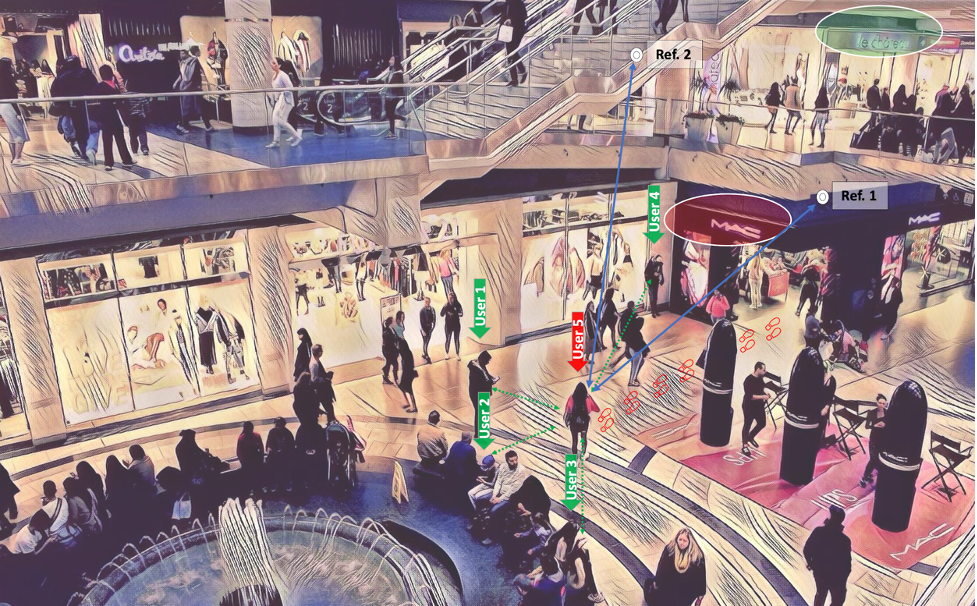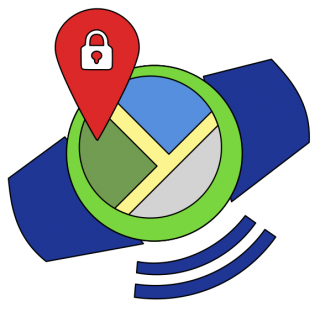In our daily life, we are surrounded by many risks, and these increase more when we carry out activities in our work environments. Fortunately, in any situation, we can be helped by our friends or colleagues and actually from anyone in this world according “The Six Handshakes Rule” by to Frigyes Karinthy, which states that you can contact any person you want by at most six connections. But what if you do not have much time? What if you are separated from others and not able to get help when you need it the most? Let’s consider some industry, for example, the mining industry. The industrial environment itself is full of sources of danger and mining is counted as one of the most hazardous industries in the world. There are three main problems there: gases that either explode or poison a person; underground water that can suddenly flood a mine; pressure, which leads to collapses. Imagine a collapse, when workers are stuck under the landslides and have no way to determine their location and report it to rescuers. However, thanks to Collaborative IoT systems, their tracking devices can communicate with each other and some workers trapped in the collapsed mine are able to communicate with the access point installed throughout the mine. In that situation, the workers can help each other to determine their position and to report it to the rescue team.
This is the one of examples of Collaborative IoT system. And what is it?
Before going deeper into details, let’s identify what the IoT system is. Internet of Things is a system of interrelated things that have unique identifiers and communicate with each other. “Things” could be whatever, regardless of size or material – everything that has access to Internet and connectivity solution. The additional word “collaborative” in front of the “IoT system” concept may seem redundant since the interconnection mentioned in the definition above already implies some collaboration.
So what exactly do we mean when talking about Collaborative IoT? A Collaborative IoT system is a system in which devices unite and exchange data to accomplish a single task, for example, gathering information from different scattered sources, processing a big amount of data, making joint decisions, localizing a device, and so on [1], [2]. Collaborative IoT devices embrace many applications. Behmann et al. [4] grouped them into three main groups: Individual for smart living, Industry for business efficiency and Infrastructure for smart communities and cities.Let’s consider this concept in more detail using the example of positioning.
Collaborative positioning systems are useful for enhancing normal positioning systems when we are in tough environments. For example, by exchanging and measuring the position between surrounding IoT devices, we can reduce the bias of our location within a shopping mall, theater, or other crowded places. Location inaccuracy may be caused, among other factors, by an insufficient number of reference points to locate us, low battery, interference between our IoT devices and the reference points. It is also common that as we move away from landmarks, the signal drops and our location becomes more inaccurate. Sometimes, we cannot locate ourselves due to the incompatibility of our IoT devices with the positioning system deployed in the buildings.
The figure below exemplifies a location and navigation scenario using collaborative positioning. Let’s imagine that we are in a large shopping center, and we want to find a store located in the east wing of the shopping center (le Château store, encircled in green). Therefore, using the signals emitted by the Wi-Fi routers and our positioning and navigation system installed on our smartphone, we start to navigate through the shopping center. However, when we arrive a few meters from our final destination, the number of Wi-Fi outers (Ref. 1 and 2 in the figure) does not allow us to accurately determine our location and guides us to the wrong area (MAC store, encircled in red). Fortunately, in that area 4 users (users 1,2,3,4) know their location with high precision because they use other position systems based on BLE (Bluetooth Low Energy) and UWB (Ultra-wideband). So, through the collaborative positioning system, and using the BLE communication they exchange and measure positions with us (user 5). A few milliseconds later, our system is recalibrated and informs us that Le Château shop is on the upper floor.

What are the main metrics that we can use in terms of Collaborative IoT in positioning or, in other worlds, based on which parameters can we estimate the performance of such a system? First of all, it is position accuracy. One more metric that is sometimes confused with the position accuracy is the position precision. However, these metrics are different: while accuracy identifies the difference between measured and real positions, precision describes the difference between the iterations of the same measurement scenario. The next commonly used metric is energy consumption, which is directly related to the other one — computational complexity: a more complicated algorithm requires more energy. Both parameters strongly depend on the applied positioning technology and play a crucial role when we talk about wearable devices, which should be small and convenient and, consequently, where it is not possible to use big batteries and very complex algorithms. Finally, one more metric that is related to the Collaborative IoT in the positioning is robustness of the system. It describes the degree of adaptation of the system to different types of environment, or, more precisely, the likelihood that you will not receive random values of your location in scatter-rich or hard-to-reach places.
In addition to applications presented, the Collaborative IoT systems encompass applications on the areas of Smart energy, health and fitness, Smart building and home, track and monitoring, among others [4]. The Collaborative IoT systems show great advantages over non-collaborative systems, nevertheless, they also present great challenges to face in terms of security, privacy, unification [3], data processing and so on.
However, problems are only opportunities in work clothes!
Henry J. Kaiser
References
- Hadidi, R., Cao, J., Woodward, M., Ryoo, M. S., & Kim, H. (2018). Real-Time Image Recognition Using Collaborative IoT Devices. Proceedings of the 1st on Reproducible Quality-Efficient Systems Tournament on Co-Designing Pareto-Efficient Deep Learning – ReQuEST ’18. doi:10.1145/3229762.3229765
- Goel, A., Shuman, M.A.R., Gupta, B., Aggarwal, A. and Sharma, S., Qualcomm Inc, 2016. Collaborative intelligence and decision-making in an IoT device group. U.S. Patent 9,292,832.
- Solanki, Krishnaraj, et al. “Collaborative Enhanced System for Heterogeneous IoT Devices.” 2020 International Conference on Electronics and Sustainable Communication Systems (ICESC). IEEE, 2020.
- Behmann, Fawzi, and Kwok Wu. Collaborative internet of things (C-IoT): For future smart connected life and business. John Wiley & Sons, 2015.
By Pável Pascacio De Los Santos and Ekaterina Svertoika

